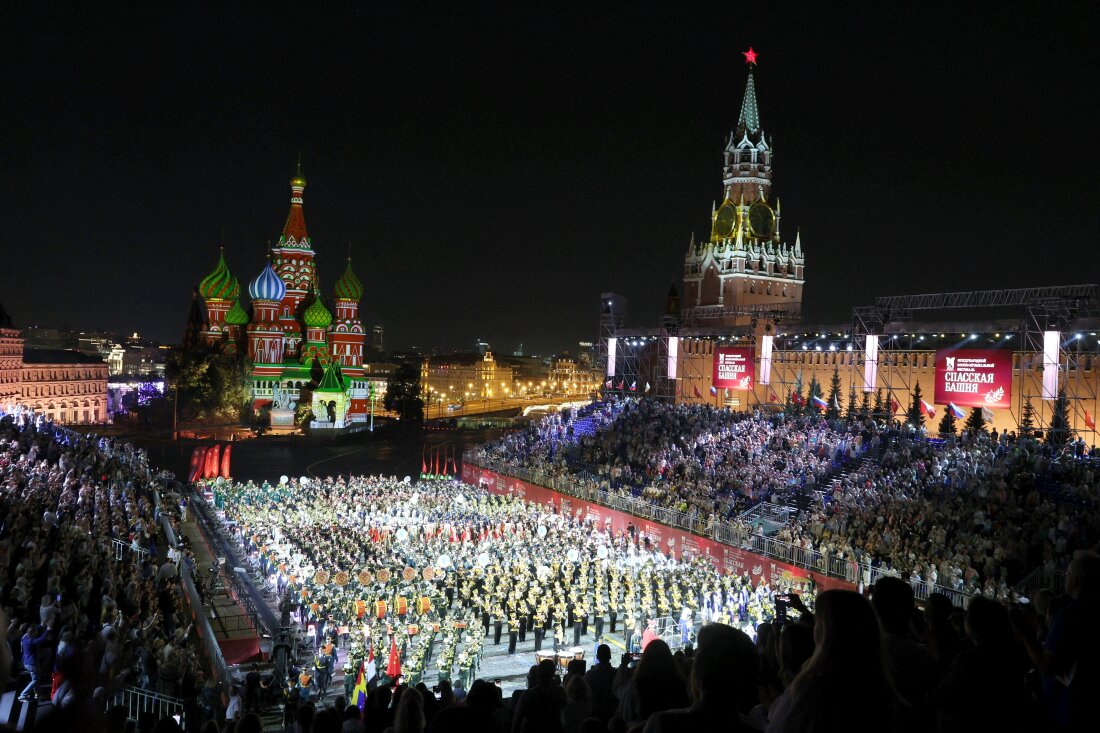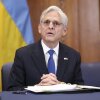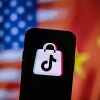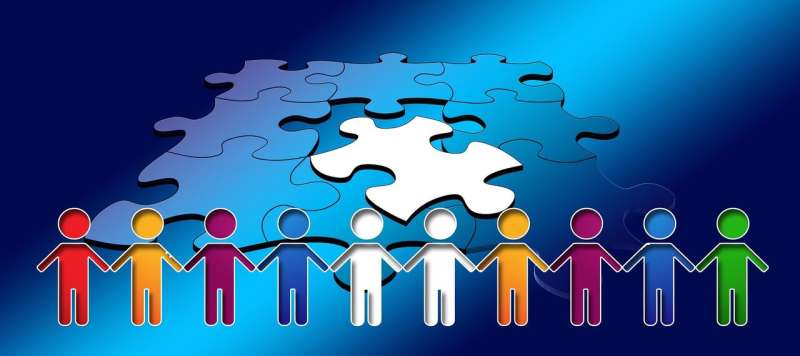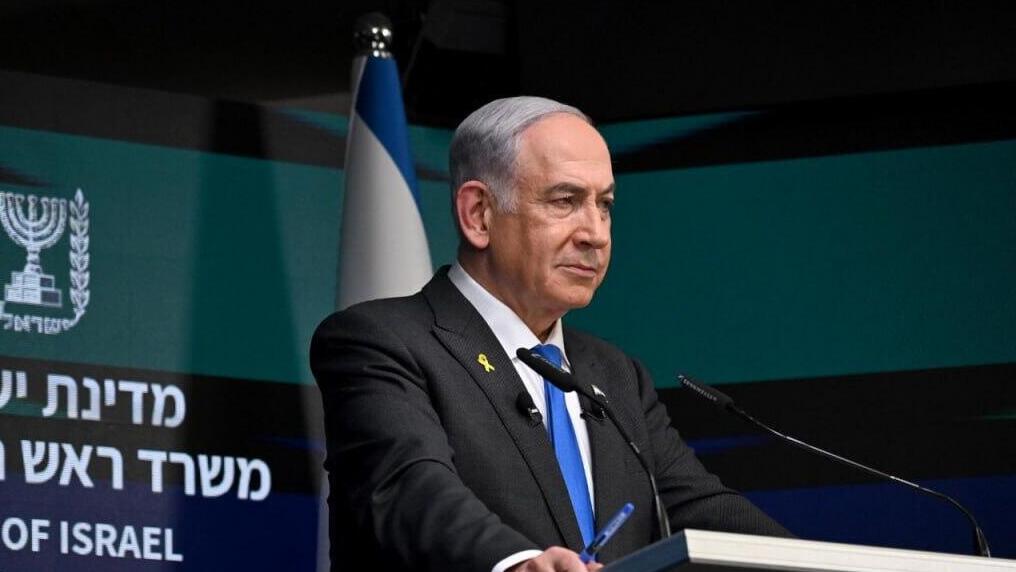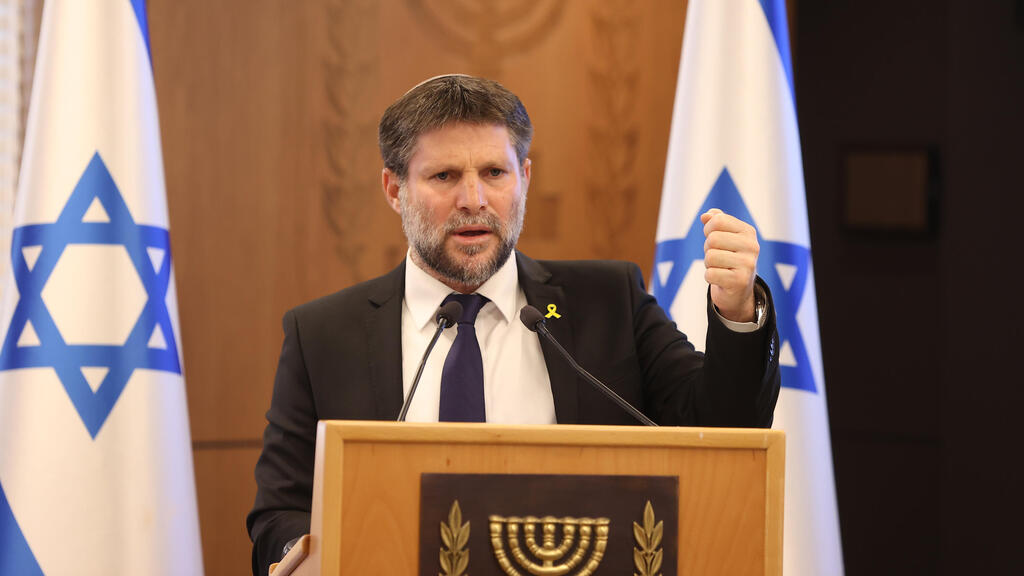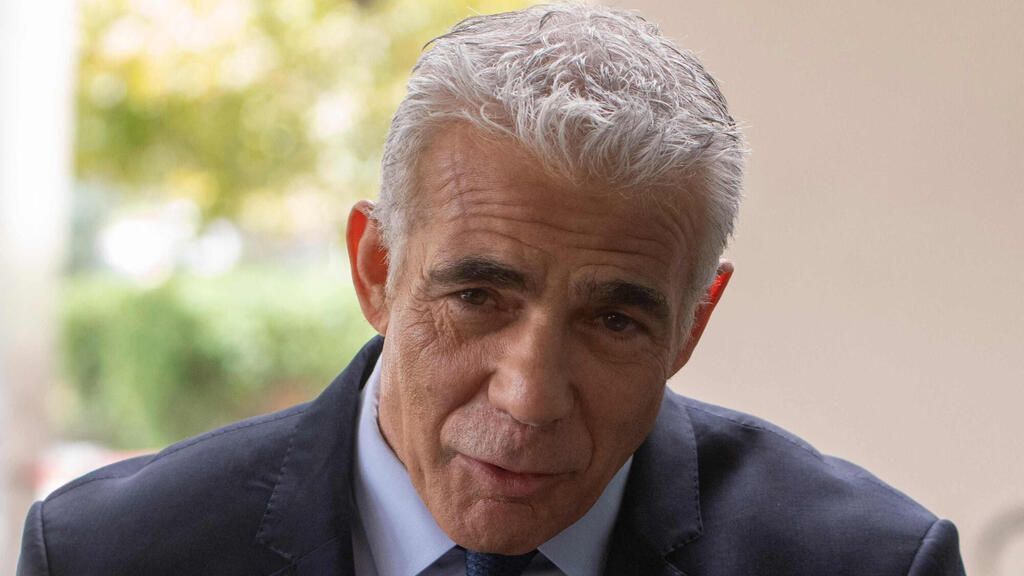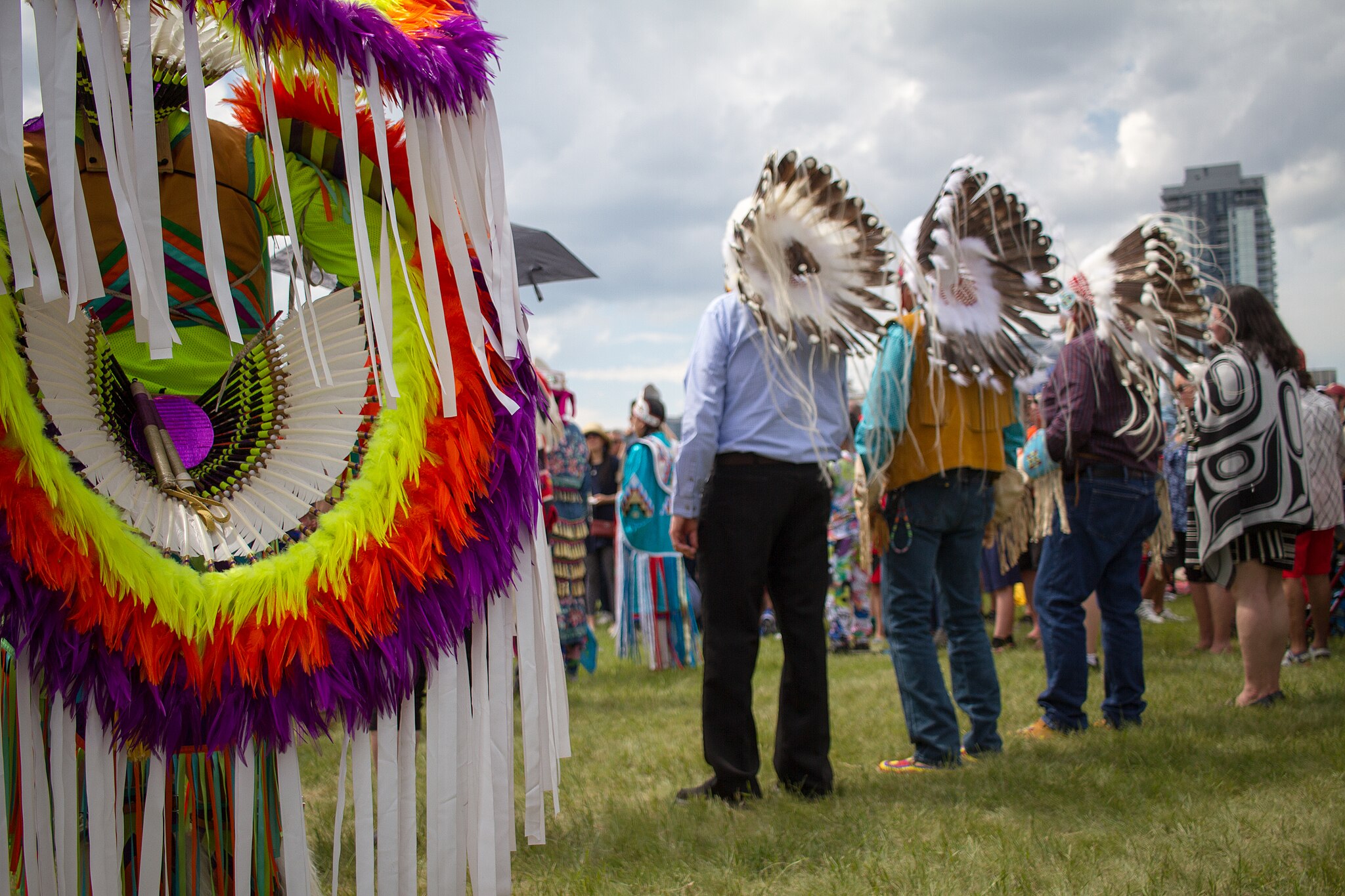PEW POLL
Americans view Walz more positively than Vance, but many aren’t familiar with either VP nominee

Americans are relatively divided in their views of Republican Sen. JD Vance of Ohio and Democratic Gov. Tim Walz of Minnesota, according to a recent Pew Research Center survey of 9,720 adults.
And the public’s views of the vice presidential candidates are largely split along lines of support for the two people at the top of each ticket: former President Donald Trump and Vice President Kamala Harris.
Views of JD Vance’s qualifications
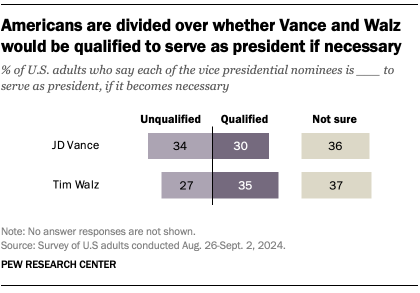
Overall, 30% of Americans say Vance is qualified to serve as president if it becomes necessary to do so, while a slightly larger share (34%) say he is not qualified. Another 36% are not sure.
Among registered voters specifically:
- 62% who back Trump say Vance is qualified; 7% say he is not.
- 66% who back Harris say Vance is not qualified; 7% say he is.
Views of Tim Walz’s qualifications
Americans’ evaluations of Walz are somewhat more positive than for Vance: 35% of Americans say Walz is qualified, while 27% say he is not and 37% are not sure.
Among registered voters specifically:
- 69% who support Harris say Walz is qualified; 4% say he is not.
- 59% who back Trump say Walz is not qualified; 8% say he is.
Overall favorability of Vance and Walz
The public’s broader opinions of Vance and Walz largely parallel views of the two candidates’ qualifications:
- 34% of Americans view Vance favorably, while 42% view him unfavorably and 23% say they have never heard of him.
- 39% of Americans see Walz favorably, while 33% view him unfavorably and 28% have never heard of him.
How demographic groups view Vance and Walz
Demographic differences in views of Vance and Walz largely track with the partisan leanings and vote preferences of various groups.
Age
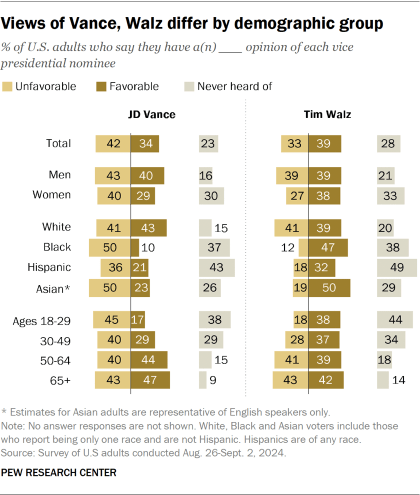
Views of Walz are more positive than negative among adults under 50, while they are more divided among older Americans. The reverse is true for views of Vance, who is viewed much more positively among older adults than younger adults.
Younger Americans are also more likely than older Americans to say they have never heard of each candidate.
Race and ethnicity
Black, Hispanic and Asian Americans view Walz more positively than negatively, while White Americans’ views are split (39% favorable, 41% unfavorable).
When it comes to Vance, 43% of White adults have a positive view of the Ohio senator, while 41% view him negatively. Black, Hispanic and Asian Americans’ views of Vance are more negative than positive. This is especially the case among Black Americans: Half have an unfavorable opinion of Vance, while only one-in-ten see him favorably.
Gender
About four-in-ten women (38%) view Walz favorably, while a smaller share (27%) view him unfavorably. Women’s views of Vance are nearly the reverse: 29% have a favorable view of Vance while 40% have an unfavorable view.
Men are about equally likely to hold favorable views of Vance (40%) and Walz (39%).
How Trump and Harris supporters view the vice presidential candidates
Vance and Walz are generally viewed positively by registered voters who back their respective running mates – and negatively by those who back the other major party candidate for president.
- 79% of registered voters who support Harris have a favorable view of Walz and 69% say he’s qualified to step in as president if it becomes necessary. Just 3% have an unfavorable view of Walz and a similar share (4%) view him as not qualified to be president if need be.
- 75% of voters who support Trump have a favorable view of Vance, and 62% say he’s qualified to serve as president. About one-in-ten Trump supporters (11%) have a negative view of him, and 7% say he is not qualified.
- While majorities of both candidates’ supporters say the other candidate’s running mate is not qualified to serve as president, Harris supporters are somewhat more likely to say this about Vance (66%) than Trump supporters are to say this about Walz (59%).
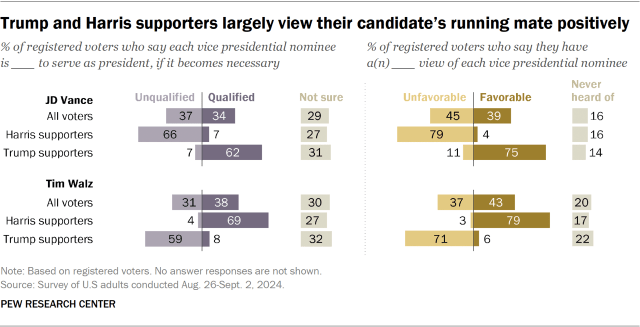
Note: Here are the questions used for this analysis, the topline and the survey methodology.
